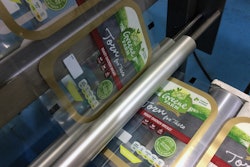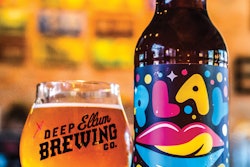
Because it’s technologically challenging and, thus far at least, it’s expensive. A key hurdle, as Packaging World contributor and Clemson University Professor Kay Cooksey pointed out in a recent Academic Angle column, has been scaling up from bench-top quantities in the lab to production quantities required for marketplace applications.
That being the case, it’s notable to hear that antimicrobial packaging is being used for a commercially available smoked trout product in Turkey. Sadly, the identity of the trout marketer is not available, so don’t look for a brand owner perspective in what follows. But the application is an intriguing one worth mentioning, even if the only details available at this point come from the two key suppliers. One is Turkish package maker Erze Ambalaj; among the biggest foam producers in Europe, it produces 60 tons of polystyrene daily in two factories. The other is antimicrobial resin supplier Parx Plastics and Additives.
Founded in 2012, Parx is headquartered in the Netherlands and operates a research and production facility in Italy. The firm says that its Sanipolymers™ represent “a revolutionary biocompatible technology to make plastic antimicrobial, reducing the bacteria up to 99% within 24 hours.” Its technology is based on biomimicry, which is to say it’s derived from nature. As the firm says on its website, “Nature can do amazing things, so why not make use of that to create sustainable solutions…”
The natural trace element zinc, an essential mineral present in food and vital in our daily diet, is the key to the Sanipolymers produced by Parx. The firm treats polystyrene granules in the reactor “at very specific conditions” to give them the desired antimicrobial properties. According to Parx, objects produced with Sanipolymer obtain antiseptic and antibacterial properties proven by tests according to ISO 22196 and JIS Z 2801 standards.
Parx co-founder Michael van der Jagt summarizes what sets Parx apart: “Other approaches to making plastic antibacterial use some kind of toxin or other harmful material. Heavy metals like silver, for example, or chemicals such as triclosan, or nanomaterials such as nano silver. With all of these approaches, you have an active substance leaching away from the plastic material to attack the bacteria. Zinc, on the other hand, is something the human body needs on a daily basis. It’s nontoxic and completely friendly to the human body. We incorporate it into plastic without any migration involved. It’s GRAS, it’s a nutrient, and it doesn’t migrate.”
The container that holds the smoked trout in this case consists of an outer PET tray plus an inner tray that Erze Ambalaj thermoforms of foamed EPS. It’s the inner foam tray that has the antimicrobial properties. In the direct gas extrusion process Erze Ambalaj uses to produce the foam from which the trays are thermoformed, a small portion of Sanipolymer is added to the garden-variety PS granules that make up the bulk of the mix.
As for packaging, an operator places a PET tray in the tooling of a tray-sealing machine and places a Sanipolymer foam tray inside. After the smoked trout is added, the tray is evacuated and backflushed. Details on shelf life, lidding material, and tray-sealing equipment are not available.
Murat Demirci, Head of Research at Erze Ambalaj, estimates that this antimicrobial package carries about a 12% upcharge compared to more conventional packaging formats. He anticipates that within three years, much of his firm’s output will be of the antimicrobial variety. “We can add this property to any of our trays with minimal effort,” he adds.


























